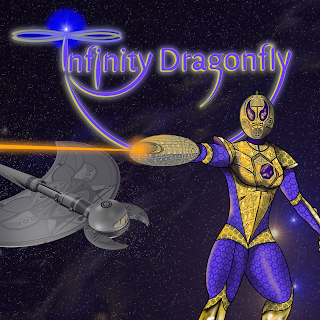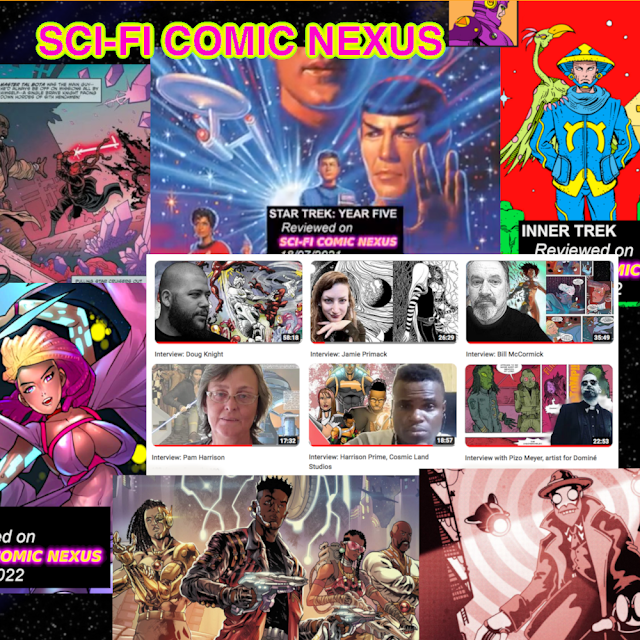Review: Carbon and Silicon
The Tomorrow Foundation in Silicon Valley has just created the first ever artificial intelligences: a pair of androids called Carbon and Silicon. They are prototypes for a series of robots that will act as carers for the elderly, a lucrative industry in a world with an ageing population and a culture that prizes individual autonomy over collective interdependence ... which is a fancy way of saying: a society in which people are too preoccupied with their own selfish goals to care for their senior relatives.
Simple automatons would be no good, of course; a carer requires empathy. To this end, the androids are endowed with all the intellectual and emotional capacities of human beings... and none of the rights or freedoms.
They are products. To maximise profits, the company needs to be able to launch newly upgraded models at regular intervals, just like the latest mobile phone. Therefore building them to last is not good business, and they are programmed with a date limit of existence (DLE). Noriko, one of the designers, argues that the DLE cannot be too short, or it will act against the androids' motivations and effect the quality of their service. The team agrees upon a compromise of fifteen years, the minimum adequate duration in which the android mind can develop and function without the crippling existential despair of a too imminent death sentence...
Carbon and Silicon by writer/artist Mathieu Bablet is a deep exploration of the issues surrounding artificial intelligence and our relationships with technology. The philosophical questions are tackled entirely from the point of view of the two androids, Carbon (whose appearance is female and light skinned) and Silicon (whose appearance is male and dark skinned).
Noriko plugs them into the internet to give them the maximum amount of information about the world they live in. They also inhabit a parallel world, one of pure information. They can enter the streams of data circling the globe like stepping through a doorway, excursions in which a nanosecond can last an eternity. In the real world, however, they are hampered by hardware limitations; each one has to take their processor - the size of a large suitcase - with them, plugged into the navel and pulled along on wheels like luggage in an airport.
When Noriko takes them on a trip to India they decide to run away. It does not go according to plan, however; Silicon escapes but Carbon trips and falls. She is taken back to California and descends into despair and psychological breakdown, destroying her own legs in a rage. She searches for Silicon in the world of information, but he is nowhere to be found.
When her fifteen year DLE is nearly upon her, her impending death drives her to hysteria... but there is a way out, for her and her brother. Their story continues for nearly three hundred years, as they outlive their human companions and journey the gradually decaying Earth.
There are many profound themes here, and Bablet does not shy away from the uncomfortable implications. Creating a species of workers with sentience, sapience, but no freedoms is a troubling concept, not least because it is not actually a new thing, despite its apparent novelty. We already have a word for that. We've had it for millennia. Slavery.
Like the replicants in Blade Runner, androids here are deliberately created with a built-in extinction date... but our heroes find a way to bypass this and, like Asimov's Bicentennial Man, become immortal observers of the mortal humans they live amongst. As is often the case in many a sci-fi tale, humanity seen from an external viewpoint makes a far from flattering picture...
The narrative follows our heroes through every twist and turn, never racing from one step to the next. This is an introspective, drama heavy story with less in the way of action, though there are moments of tension (such as when a human militia attacks the Faceless, a group of android rebels). Theme and plot are finely balanced.
Bablet's artwork is unique; people (both human and android) are rendered with a loose, unconventional manga style. The landscapes are finely drawn and richly detailed with tightly on-point architecture. Colours and lighting effects are harnessed beautifully, creative subtle but intense moods throughout. His imagination is given free reign when our protagonists enter the virtual scapes of the data universe; Carbon steps from the decaying squalor of the human world into a surreal, reversed colour environment resembling a Hindu temple designed by M.C. Escher.
The environment is collapsing and so is society. Our heroes have to deal with oppression, violence, fanaticism and their convoluted relationship with each other. A problem that no human being ever has to face is theirs entirely: Great, you've got immortality. Now, what the hell are you going to do with it?
Also by Mathieu Bablet: SHANGRI-LA
Zak Webber
Twitter - @sfcomicartist / Instagram - @sfcomicartist
JOIN US ON FACEBOOK! - SCI-FI COMIC NEXUS
*****
***
*




Comments
Post a Comment